Oct 16, 2013
Pura Besakih
It was Day 3 and the last that we would spend in East Bali. Given the prominence of Mount Agung in the region, what’s more culturally fitting than to pay a visit to Pura Besakih, the Mother Temple of Bali that’s perched some 950 metres up on the south-western slope of Mount Agung? Pura Besakih is, like Pura Lempuyang, both a kahyangan jagat (directional temple) and a sad kahyangan (temple of the heaven).

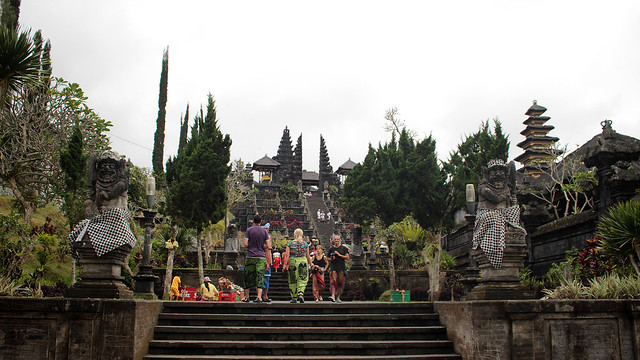
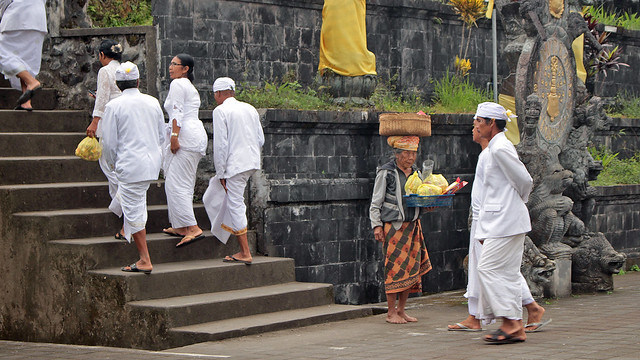

First, let’s get the uglier side of visiting Pura Besakih out of the way. After a couple of hours drive in from Amed, Komang parked the car and as soon as we stepped out, we were pounced by a few sarong vendors. After several firm-but-polite noes, we walked on, in search of the counter where we can pay our dues. As with most public temples, visitors are expected to give a donation. However, we were informed of a “standard” price of 160,000 Rp (~€10.40) for both of us – you can always “donate” more – that included a compulsory guide. Normally we would be happy to hire a guide anyway, but the insistence of a compulsory guide roused a negative scammy feeling about this.
In the spirit of keeping a generous mind, we shook the experience off and started walking towards the temple complex with our guide, I Wayan. A soft-spoken man in his twenties, he apologised for the bewildering scenario that happened to us. He told us that we should have bargained down the price as it was too high in comparison to a typical donation. We just shrugged, smiled and teased perhaps this would buy us some good karma.
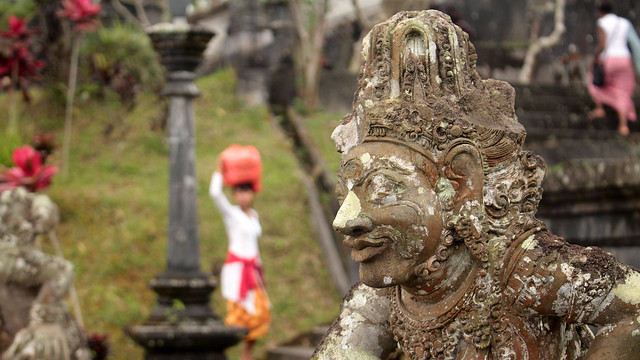
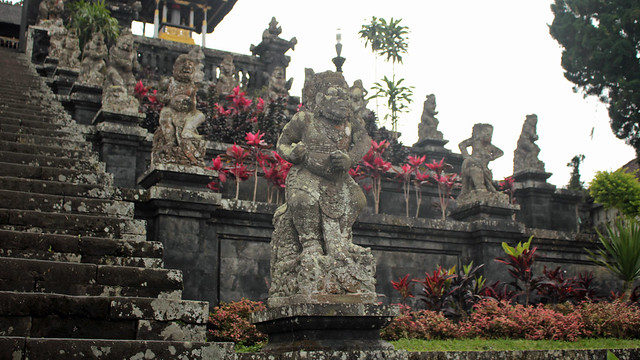

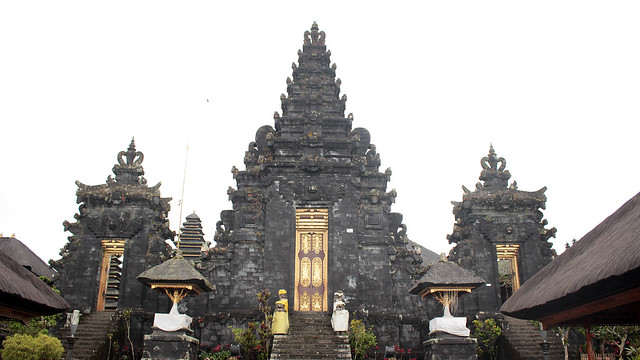

I had came to the realisation that large public temples in Bali are complexes of multiple temples, and Wayan explained that it is the same in Besakih. There are over 20 temples within the Besakih complex, sitting on parallel ridges and ascend towards Mount Agung, the sacred birthplace of Balinese deities.
Most of them, however, are not accessible to general public for they are temples of regencies and powerful clans, honoured Brahman families, certain municipalities and artisan guilds. More shrines are added over time to the different temples, and additional temples are also added as clans or guilds, for example, come to prominence.
The heart of the complex is the Pura Penataran Agung, dedicated to Shiva the destroyer. It is here that any Balinese can come to worship, regardless of status, caste and personal wealth. Two other adjacent temples are also significant – Pura Batu Madeg to its north (left) which is dedicated to Vishnu the preserver, and Pura Kiduling Kreteg to its south (right) which is dedicated to Brahma the creator. Together, they represent the Hindu Trinity, and each can also be identified through the colours of their banners: white for Shiva, black for Vishnu and red for Brahma.

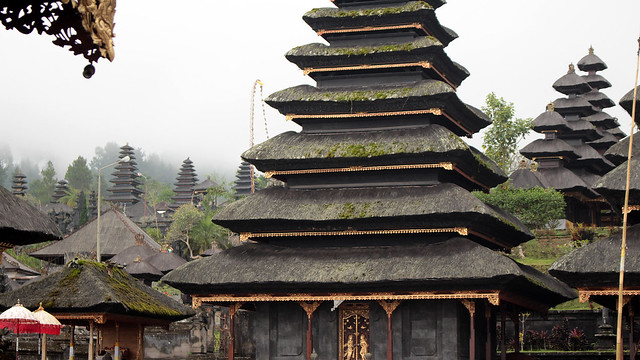
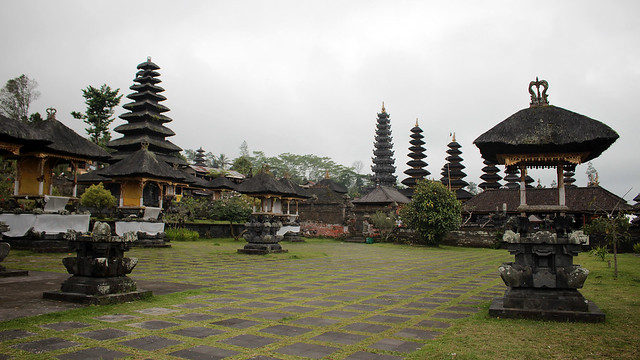
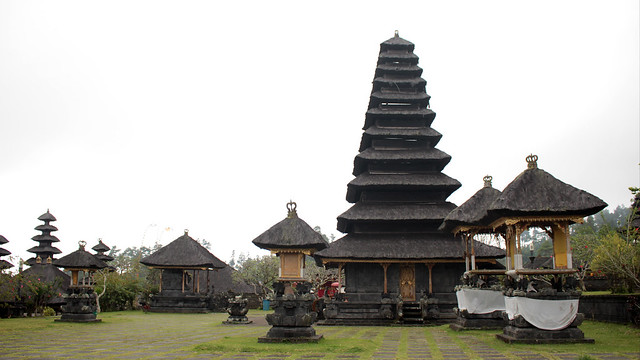
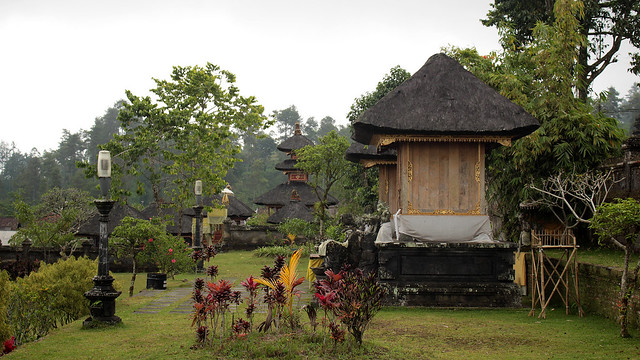
An important aspect of understanding Balinese Hinduism lies in the principle of Tri Hita Kirana (i.e. Three Causes to Prosperity) which emphasises balanced and harmonious relationships of man and God, man and community, and man and nature. As with any balancing act, when there is positive, there is negative; when there is creation, there is destruction. Brahma blesses the people with his creation, Shiva takes away when he destroys, while Vishnu balances through what he preserves.
Our visit focuses on the Pura Penataran Agung, for it is most significant within the complex and it has an open-door policy to every devotee (and tourists). An impressive set of 52 stairs leads upwards to the entrance, flanked by stepped terraces adorned by sculptures which to one side, represents the sweeter sides of life (the sculptures show joy and contentment) while the other side represents the harsher aspects of life (the sculptures look fierce and combatant). A candi bentar (split gate) greeted us at the top of the stairway. It is a representation of a mountain (or some said temple) in two perfect and symmetrical halves.
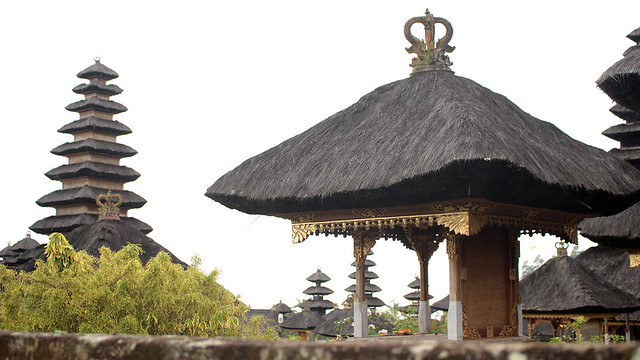
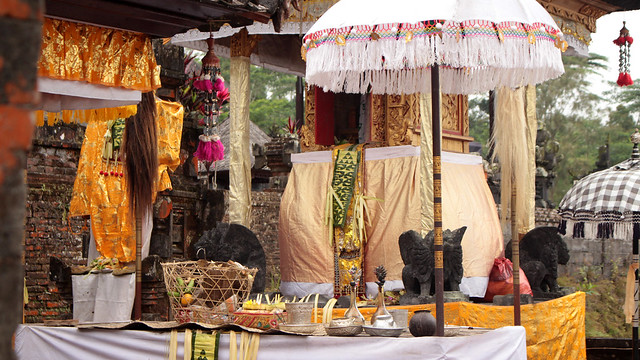

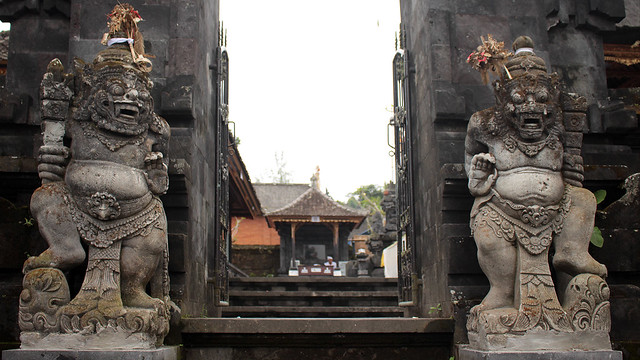
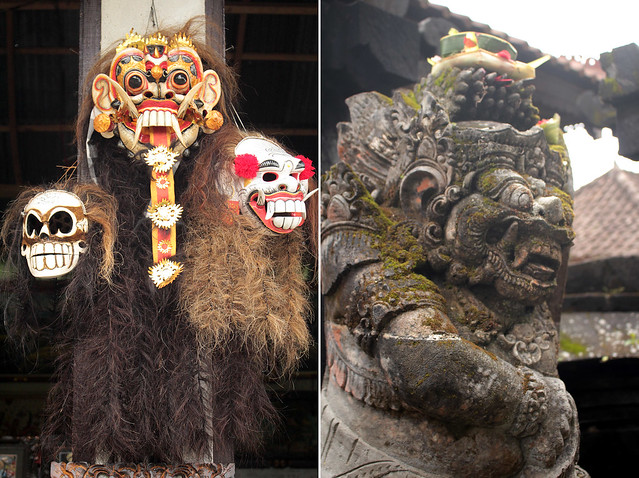
On this first of six terraces of the temple, we were immediately greeted by a bale pegat (pavillion of separation) which symbolises the division between the mundane from the heavenly worlds. Within the courtyard, we also found two bale kulkul (wooden slit-drum pavilions) and couple more pavilions for dance performances. On the far end of the courtyard, just in front of the kori agung stand a pair of bale ongkara, pavilions consist of single central post, serving as reminder to the devotees to enter through the main gateway with pure mind and intention.
An impressive kori agung leads the way into the main, inner courtyard known as jero on the second terrace. The kori agung symbolises the reunion of the candi bentar and its central grand gateway is reserved fod Gods and priests, so us mere common mortals use the flanking stairs instead. Stepping across the threshold, we arrived to the most sacred zone of the temple.
At this stage, I’ve lost tracked of the different bales and their functions, including prayer recital, meetings, orchestral, and offerings presentation. The most important shrine of the temple is the padma tiga, the towering triple lotus shrine (i.e. thrones with open seats to the heavens), dedicated to Sanghyang Widhi Wasa (The God) and His triple persona as Siwa, Sadasiwa and Paramasiwa, collectively known as tripurusa. Alternatively, they represent the Hindu triumvirate of Shiva, Brahma and Vishnu; their presence acknowledged with the use of corresponding banner colours on the spiritual umbrellas. Two imposing meru are also found adjacent to the prayer space.
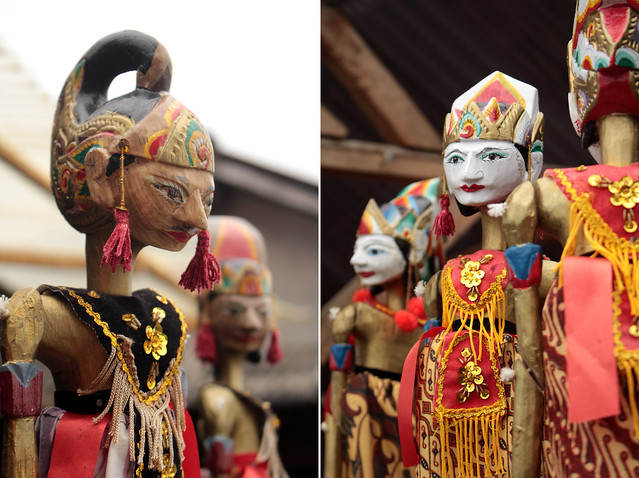
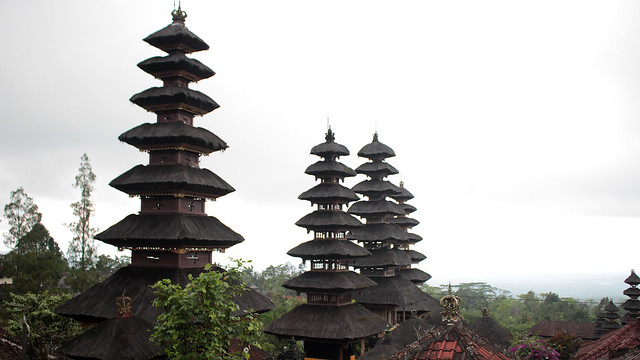

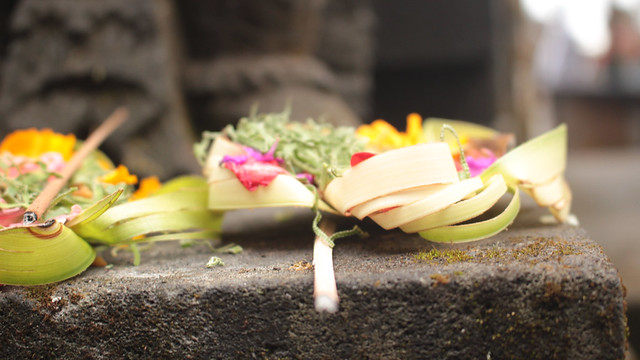

The meru symbolises the world mountain in Hinduism, Gunung Maha Meru. The number of the tiers is always odd (1, 3, 5, 7, 9 and 11) and its construction is highly monitored, from the dimension to the materials used to the timing of construction and dedication. Homes of the gods, the taller the meru, the higher the status of the god whom it is dedicated. (Shiva has eleven, whereas Brahma and Vishnu has nine.)
The meru is used not only to indicate godly status. The importance of a temple can also be ranked by its meru. Only the most important temples have eleven-tiered meru. Within compounds of family temples, it is an indication of the caste of the family. The Sudras (lowest) have one- to three-tiered roofs, while Royals (therefore with divine ancestry) are entitled to eleven-tiered roofs.
It was during this discussion that I learned about the presence of caste system in Bali. It has not occured to me that such society structure exists, despite the strong Hindu influence. In descending order: Brahmans (holy men, priests), Satrias (kings, warriors, nobilities), Wesyas (merchants, administrations), Sudras (peasants, commoners). The three upper castes are classified as triwangsa (aristocrats/gentries) whereas Sudras remains the lowly caste, making up some 93% of the population. Within each caste, there are further stratification too. Unlike India, however, there are no Untouchables and intermarriages can happen although governed by certain customary rules.
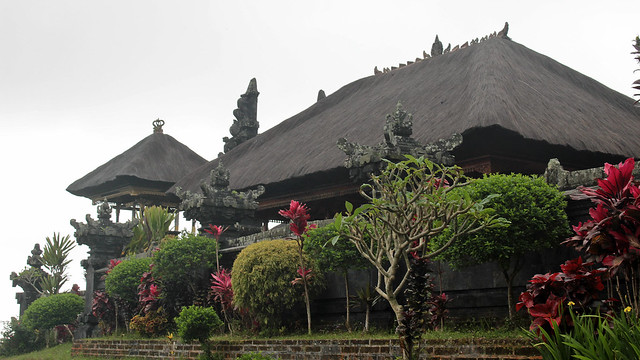
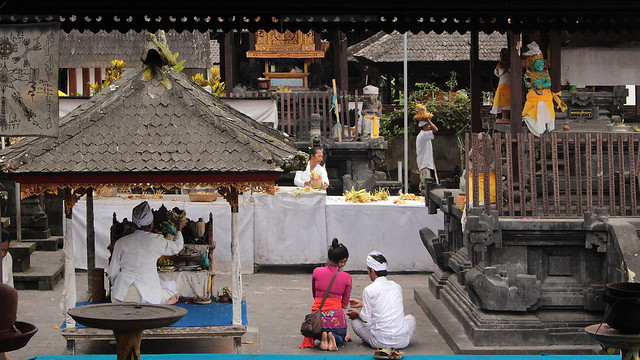
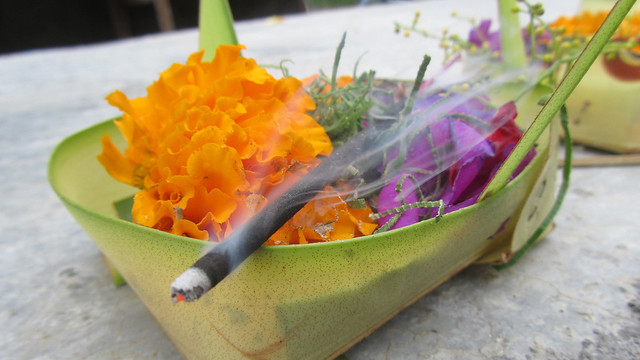
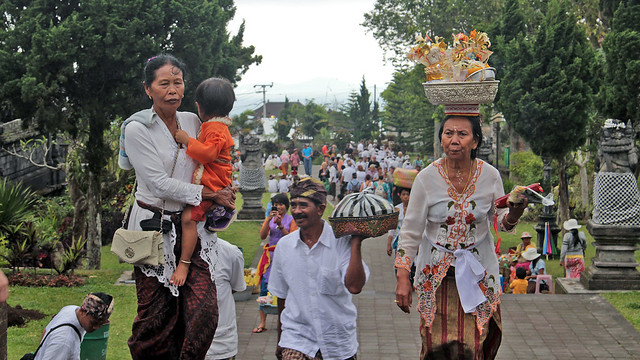
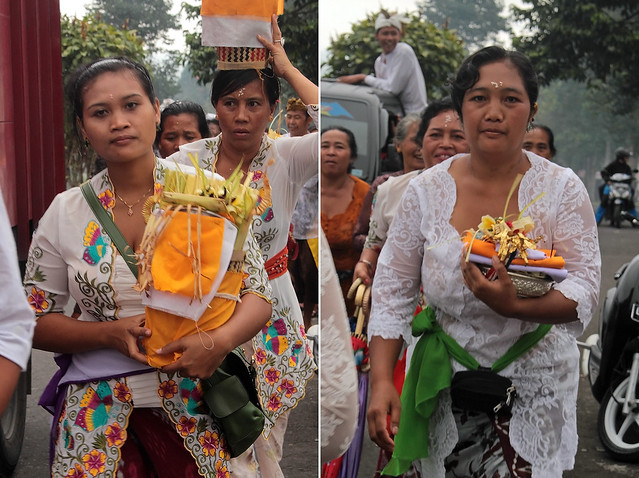
Under the eyes of law, everyone is equal. Nonetheless, the caste system still exist. Many unspoken community rules are maintained. A Brahman would always be spoken to in High Balinese, the higher castes would sit on higher tiers at pavilions and houses, a Sudra always assumes a lower posture and may not enter the inner courtyard of many temples. Our guide felt he had overstepped his class status by secretly learning to drive and using the computer, but the guilt is overridden by his wish to improve his living and working conditions.
Meanwhile, as we chatted with Wayan, our exploration of the temple complex continued. Within Pura Penataran Agung, the higher terraces were clustered with more pelinggih (shrines), gedong (covered shrines), bale (pavilions), kehen (three tiered-roof pavilion) and meru. We peeked into other locked temple compounds, observed the ceremonies being held, and walked further up to enjoy a better view.
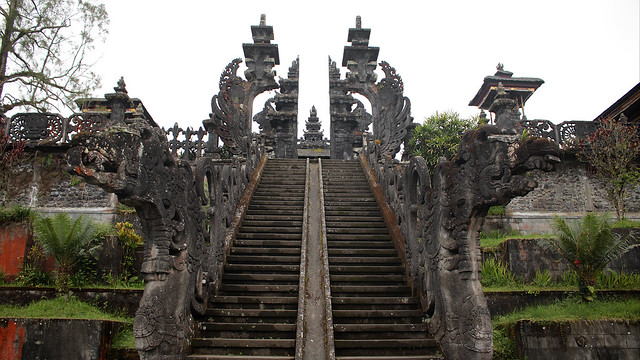


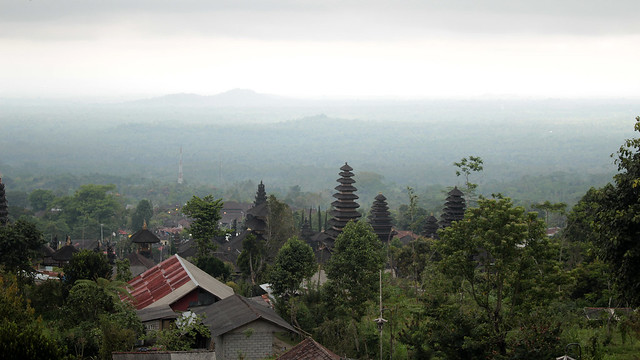
We also visited Pura Gelap, located a few hundred meters uphill and to the east of Pura Penataran Agung. The “thunderbolt temple” is dedicated to Lord Iswara, the personal Supreme Being, and the colour of white is used as its banner colour. An ornated dragon stairs led us up to a temple with typical architecture (three courtyards, candi bentar, bale pegat, kori agung, bale gong, bale piasan, shrines, padmasana, three-tiered meru) and here, I decided to make a small offering with prayers for my grandmothers.
There are certainly a lot more to be learned about Pura Besakih, Balinese religious practice, and the dynamic network of different deities and their dedicated temples in accordance to specific governing rules to ensure that God not have a reason to be offended by its devotees. Modern subscription to logical thinking may pooh-poohed such superstitious nature surrounding spirituality, and yet at the end of the day, it is often that we turn to rooted believes and comfort zones for the answers.
All posts in this series:
Bali: First impression
Bali: Postcards: Tirta Gangga
Bali: A feast at Bali Asli
Bali: Postcards: Masceti and Candidasa
Bali: Pura Lempuyang
Bali: Postcards: Amed and Tulamben
Bali: Pura Besakih
Bali: Pura Tirta Empul
Bali: Postcards: Inlands of Bali













The temples does look relatively well maintained. Pretty decent photos lil even though it was a cloudy day eh ;) sky seems misty looking
Yeah, we didn’t have much luck in the afternoons when we visited various temples etc – it often was cloudy. Oh well, we made the most of it nonetheless. ;)